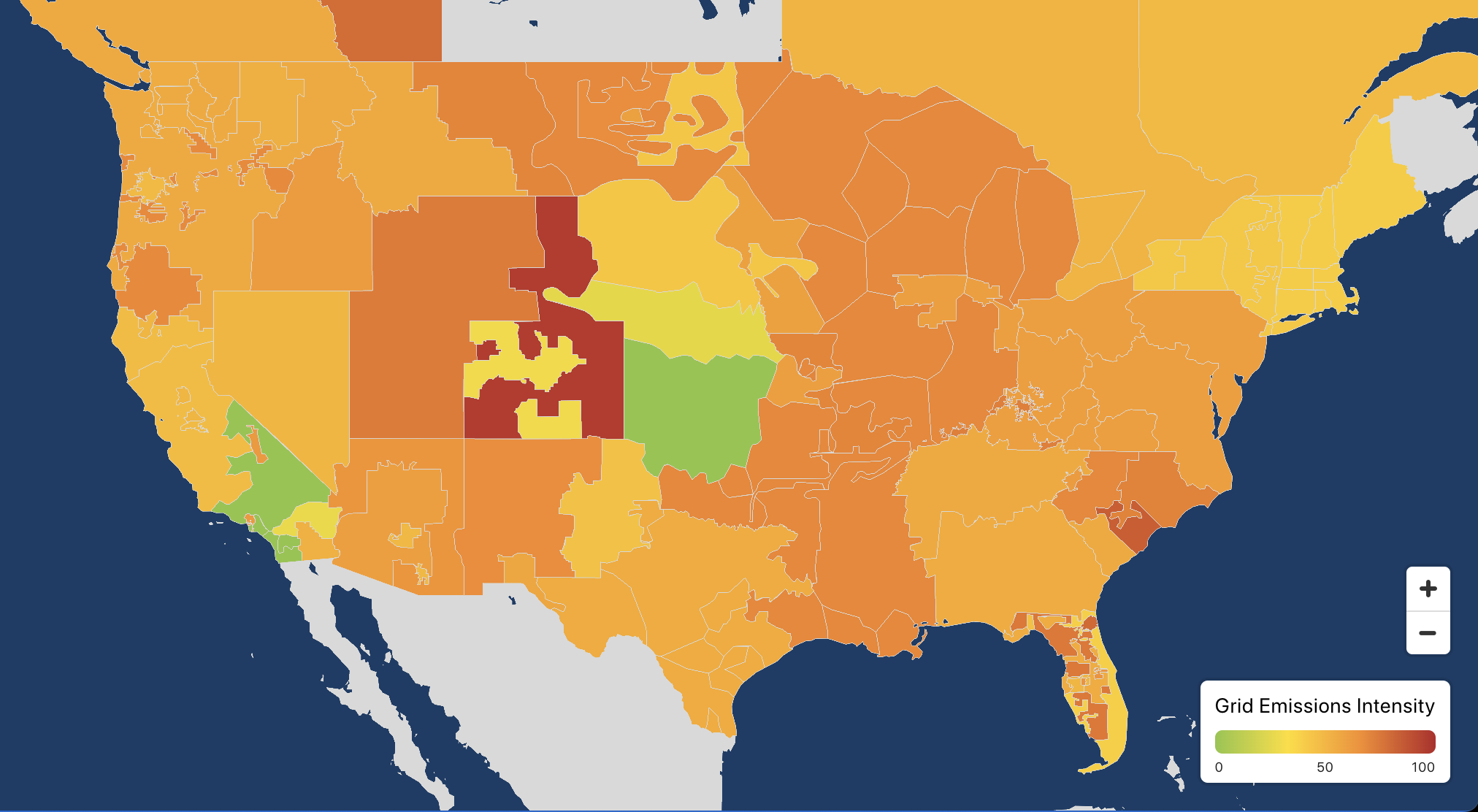How does electricity create emissions?
Unveiling the Hidden Emissions of Utilities
Gas, water, and electricity are our essential utilities–often going unnoticed as a subliminal resource to our daily routines. From powering our homes to keeping us warm (or cool), these utilities are cornerstones of our comfort and convenience. They are also often an overlooked area when it comes to trying to reduce emissions, until now. By now, you may be asking yourself, “How does turning on a light switch create emissions in the atmosphere?”
Electricity Generation & Transmission
Electricity generation is a significant contributor to greenhouse gas emissions, particularly carbon dioxide (CO2). The primary sources of electricity include fossil fuels such as coal, oil, and natural gas, as well as renewable sources like solar, wind, hydro, and nuclear power.
Fossil Fuels:
Coal, oil, and natural gas power plants burn these fossil fuels to produce electricity, releasing CO2 and other pollutants into the atmosphere. Coal-fired power plants are notorious for their high emissions of CO2 and other harmful substances, contributing to air pollution and climate change.
Renewable Sources:
While renewable sources have a lower carbon footprint, they are not entirely emission-free. Manufacturing and installation of solar panels, wind turbines, and other infrastructure involve energy-intensive processes that emit CO2. Additionally, some renewable technologies, like biomass, can release emissions during production and combustion.
Figure 1 above shows the electric grid emissions intensity of the different regions in the U.S. depending on what type of energy generation is used in that area. Green - least intense, Red = most intense. Source: WattTime.org
Natural Gas Utilities: Methane Leakage
Natural gas, often touted as a cleaner alternative to coal and oil, is not without its environmental drawbacks. Natural gas mainly consists of methane, a potent greenhouse gas with a significantly higher heat-trapping potential than CO2 over short timeframes.
Methane Leakage: Methane leakage occurs during the extraction, production, and transportation of natural gas. Leaks from wells, pipelines, and storage facilities release methane directly into the atmosphere. These fugitive emissions contribute to climate change and diminish the environmental benefits of using natural gas.
Water Utilities: Energy Intensity and Infrastructure
Water utilities play a crucial role in supplying clean water for drinking, sanitation, and industrial use. However, the processes involved in treating and distributing water can also lead to emissions.
Energy Intensity: Water treatment and distribution require significant energy inputs, primarily for pumping and purification processes. Depending on the energy sources used, these operations can release CO2 and other pollutants.
Infrastructure: The construction and maintenance of water infrastructure, such as dams, reservoirs, and treatment plants, contribute to emissions. The production of concrete and other construction materials emits CO2, while the transportation of equipment and materials adds to the carbon footprint.
Mitigation Strategies and Moving Forward
Recognizing the environmental impacts of electricity, natural gas, and water utilities is the first step towards sustainable practices. Governments, industries, and individuals can take proactive measures to reduce emissions:
Transition to Clean Energy:
Invest in renewable energy sources to decrease reliance on fossil fuels for electricity generation. Transitioning to solar, wind, and hydroelectric power can significantly reduce CO2 emissions. You can do this in your home by installing solar panels, signing up for your utility provider's renewable energy program(contact them directly), or signing up for third-party retail services like Community Solar provided by Arcadia if you cannot install solar on your home.
Methane Capture:
Implement technologies to capture and minimize methane leaks in natural gas infrastructure, reducing its climate impact. Companies like Project Canary are enabling the software tools needed to do this.
Energy Efficiency:
Improve energy efficiency in water treatment and distribution systems, reducing the carbon footprint of water utilities.
Public Awareness:
Educating individuals about responsible consumption, conservation, and the environmental impacts of their utility usage. Tools like Sustaio are great resources for measuring and reducing your impact on the environment. Sign up today!
While electricity, natural gas, and water utilities are indispensable for modern living, their generation and distribution come at an environmental cost. By understanding the emissions associated with these utilities, we can make informed decisions to minimize our impact on the planet. Embracing renewable energy sources, enhancing infrastructure, and promoting efficient consumption can pave the way for a more sustainable and eco-friendly future.
SOURCES:
Intergovernmental Panel on Climate Change (IPCC) reports: These reports provide comprehensive assessments of climate change and its causes, including emissions from energy sources like fossil fuels.
U.S. Environmental Protection Agency (EPA): The EPA offers data and reports on greenhouse gas emissions, including methane leakage from natural gas infrastructure.
International Energy Agency (IEA): The IEA provides insights into global energy trends, including information on emissions from different energy sources.
World Health Organization (WHO): WHO reports can provide information on the health and environmental impacts of electricity generation and water treatment.
Academic journals: Search databases like PubMed, Google Scholar, or academic library databases for peer-reviewed articles on emissions from utilities.
Nonprofit organizations: Environmental organizations like the Natural Resources Defense Council (NRDC), World Resources Institute (WRI), and Union of Concerned Scientists often publish research on emissions and sustainability.
Government agencies: Look for reports and publications from relevant government departments responsible for energy, environment, and water management in your country.


